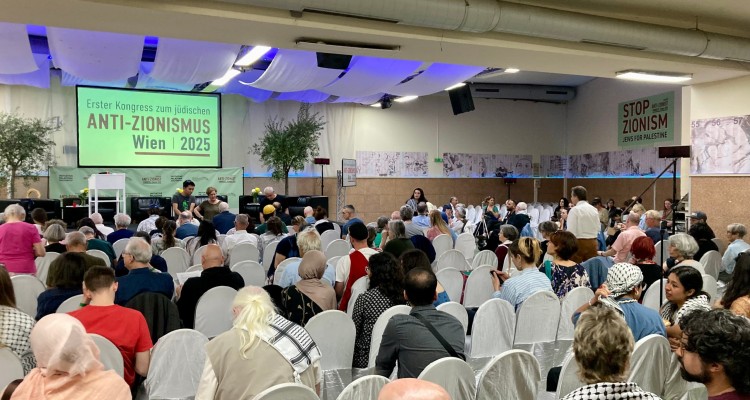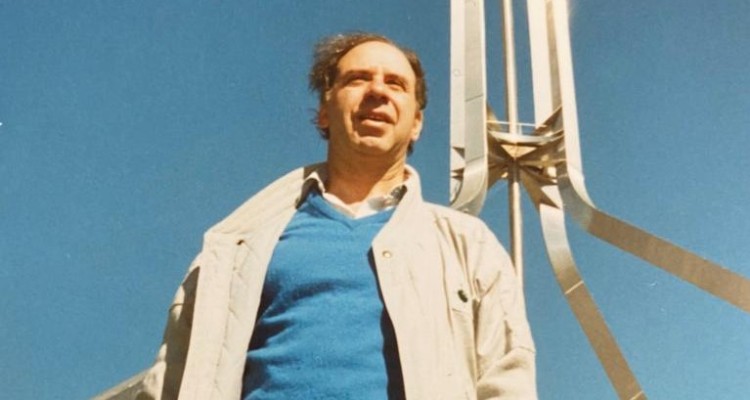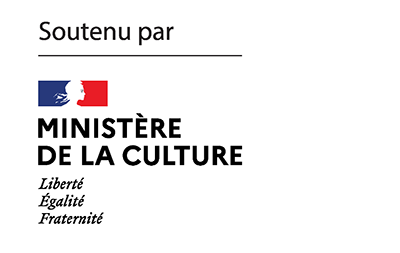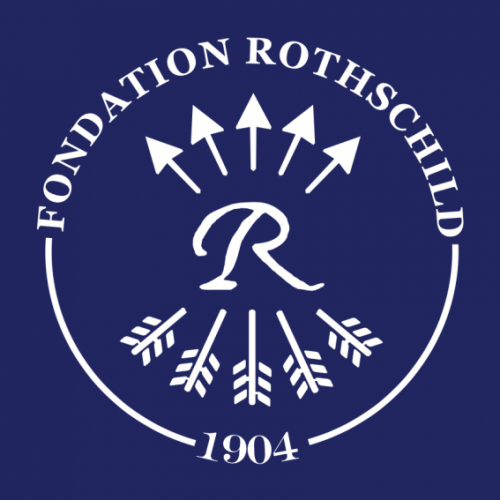Poland once had more than 1,500 Jewish cemeteries. Since Poland’s current Jewish population is estimated at 10,000[1], the math is stark: today in Poland there is about one Jewish cemetery for every 15 living Polish Jews. In the report — which we are publishing in two parts — American journalist Gabriel Rom tells us about both the virtuous initiatives to preserve these cemeteries and the vicious policies of exploitation to which they are subjected.
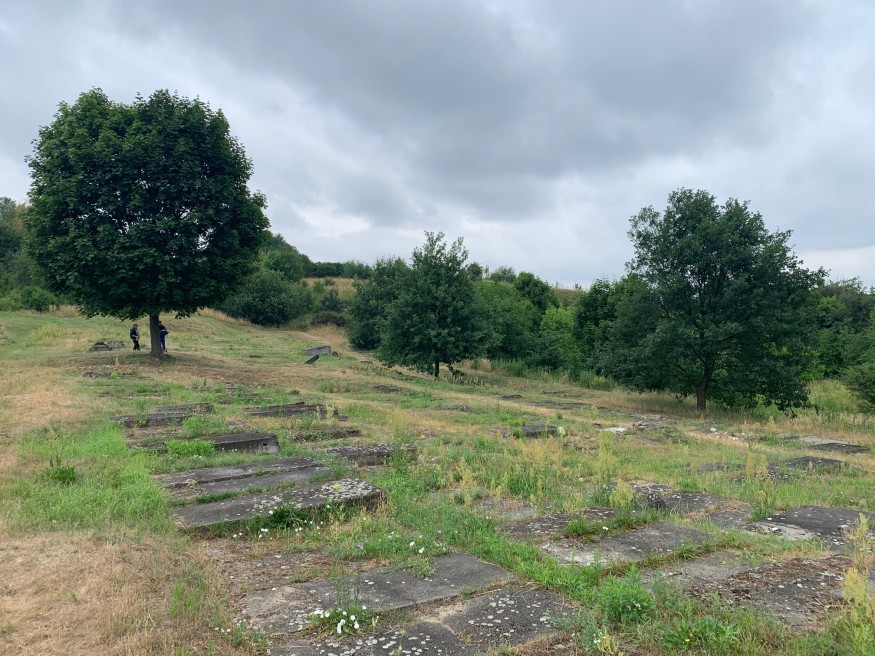
From the mythic Holy Cross Mountains blanketed in thickets of pine and fir, to the eastern Silesian lowlands, Jewish cemeteries cover the Polish landscape. They are concentrated in the country’s east, but present everywhere. Some are small and hidden quietly decaying under decades, often centuries of neglect. Others are magnificent and sprawling, with wide boulevards studded with the tombstones, known as matzevot, of some of Jewry’s great religious, social and political luminaries. The rest — the great majority — are no more. They are points on a map, now soccer fields, parks and apartment complexes.
It is difficult to call Warsaw’s Jewish Cemetery, one of the largest in the world, a cemetery. With an estimated 300,000 graves, it is more like a city of the dead. Built in the 19th century under the influence of rationalist architectural ideas, the cemetery is a combination of formalist order — a massive centrally located boulevard cuts across the ground along an east-west axis — and the disarray of a small metropolis. Move to the sidepaths, and the dog-collar of formalism is stripped away: vines, unable to be removed so as not to disturb the graves, entwine looming trees. Gravestones haphazardly lean on each other, sinking into trees, bushes, and flowers (ferns, geraniums, fuchsias, date palms), as water piped underground keeps them alive.
It is the resting place of many worlds: L.L. Zamenhof, a Jewish doctor from Białystok, who invented the universal language of Esperanto in an effort to overcome the tragedy of Babel is interred here. So is Szymon Ashkenazy, who in 1913 directed “The Dybbuk” which immortalized Shtetl life on the silver screen. A few meters away lies Rabbi Naftali Zvi Yehuda Berlin, “the Netziv” — Pillar of Volozhin who closed the doors to his famed Yeshiva rather than permit secular studies as the Imperial Russian authorities demanded.
That the cemetery is one of the crown jewels of Polish Jewry has not been lost on Poland’s current ruling elite. In 2017, after decades of neglect, Poland’s nationalist, euroskeptic Law & Justice Party (PiS) gave 100 million zloty ($28 million) to restore the decaying site, one of the largest government donations to a Jewish organization in European history.
“It is the duty of the Polish state to care for our heritage,” said Polish culture minister Piotr Gliński when the donation was announced. Such words, regardless — or especially — if they come from a figure on the political right, carry a certain symbolic power in Poland. By claiming Jewish history as Polish history, Gliński further blurred the ever-troublesome line between Jewishness and Polishness. One was not Polish despite their Jewishness, but because of it. Michael Schudrich, Chief Rabbi of Poland said Glinski’s comment was like “honey to my heart.”
The meaning of the moment was not lost on Witold Wrzosinski, the thirty-seven-year-old caretaker of the cemetery. Wrzosinski said that it is precisely the populism of PiS – a party which includes lawmakers who have spoken approvingly of The Protocols of The Elder of Zion – that makes it interested in Jewish heritage. Even if their underlying motivations were nakedly political, Wrzosinski said the donation was nevertheless sign of a changing climate of opinion among Poles across the political spectrum towards Poland’s complex Jewish history.
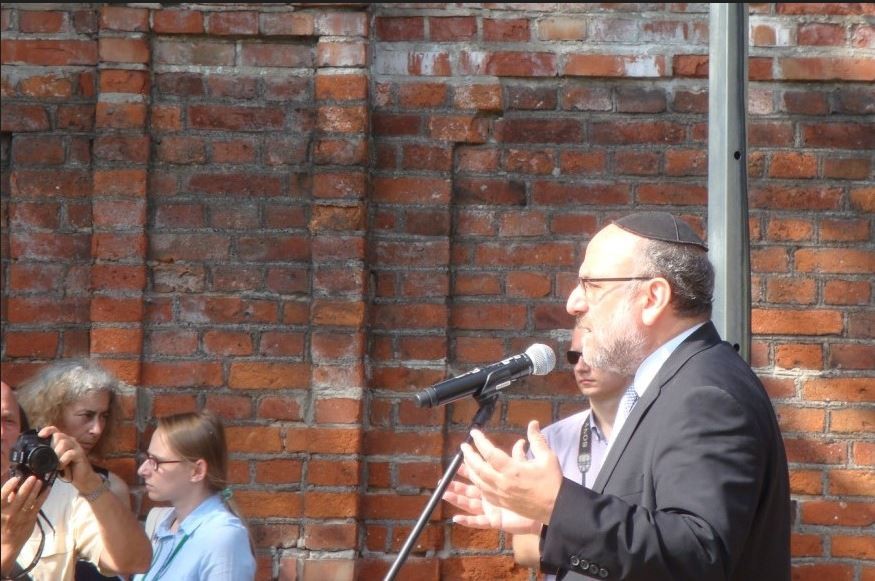
“It pains me to say it, but the current government is the best government for the commemoration of Polish-Jewish culture and history,” he told me. “Before this government, there was no discussion about Jewish history from right-wing politicians. There was no attempt to even debate the narrative, now the government has chosen the positive one.”
He rolled a cigarette on his knee while a group of American teenagers linked arms and sang as they clambered up towards the grave of the Sanzer Rebbe.
Wrzosinski is a quiet, spry man who seems to wear his historical responsibility lightly. A child of communists with Orthodox Jewish roots, he was raised as an internationalist by “people who were supposed to feel welcome everywhere.” When, as a young man, he discovered he was Jewish, he was nonplussed. The psychological agonies of what it means to be a Pole and a Jew, the complexities of hyphenated ethnicity, did not weigh on him. “For many [Poles] being Jewish is a dark psychological trauma, it represents some type of break,” he said. “For me it was just simply good news. It was the confirmation of something I felt – something that I wanted.”
As Jewish identity has moved from the shadows in modern Polish society, Jewish history has itself taken on a strange new meaning: it has become politically useful. Indeed, Jewish cemeteries largely fit into a neat historical narrative for Poland’s ruling government. They are opportunities to present a self-fashioned narrative of glory excised of darkness; finely kept exhibitions in a museum a millennia old.
There is, however, one exception: Jews killed by Poles. Between 130,000 to 200,000 Polish Jews were killed by Christian Poles or denounced to the Nazis during the Second World War, according to the Polish historian Jan Grabowski. It’s a chapter of history that Poland has tried, with questionable success, to commit to the “memory hole,” as the scholar Marci Shore put it.
“Jews that were dead before the war, Jews that were killed by someone else, Jews that died of natural causes — the government has no problem with them,” said Jonathan Ornstein, the executive director of the Jewish Community Centre of Kraków, in an interview with K. “If some eighteenth century cemetery needs revitalization, that’s an easy way for the government to put money into something that won’t stir up any trouble. It doesn’t lead towards Polish culpability. But you know… it wasn’t only the Germans is precisely what this government doesn’t want to hear.”
In 2001, an explosive national debate erupted — spurred by the historian Jan Gross’s book Neighbors — over the 1941 Jedwabne Massacre which Polish farmers perpetrated against their Jewish neighbors, killing at least 340 Polish Jews. Across Polish society the “black pages of history” during the war – most shockingly exemplified by Jedwabne – moved to the front of public consciousness, as then-president Aleksander Kwaśniewski put it. Over a decade later POLIN Museum of the History of Polish Jews, was completed in 2014 with 150 million zloty ($34 million) in government funding. The political figures behind the museum’s opening, former President Bronisław Komorowski, former Minister of Culture Bogdan Zdrojewski, and Donald Tusk, Poland’s Prime Minister and former president of the European Council, were political moderates squarely within the European mainstream at a time when Poland still enjoyed friendly relations with Brussels. “The nation of victims was also the nation of perpetrators,” Komorowski said in a 2015 election debate. “Difficult and painful episodes in our history must not be hidden.”
Such a statement is almost unthinkable in today’s Poland, defined by a resurgent right and a multi-year breakdown in relations with the EU. Indeed, Poland’s former President Andrzej Duda responded to Komorowski at the time by accusing him of “attempt[ing] to destroy Poland’s good name.”
And yet, it was Duda who had signed the law guaranteeing funding for the cemetery in 2017. It’s an incongruity which expresses the Polish right’s fundamental ambivalence towards the country’s Jewish past and its insecurity towards the nation’s present.
Less than two months after the cemetery donation was announced, Duda signed a bill into law prohibiting accusations that the Polish nation was collectively responsible for Nazi crimes during the Second World War, particularly the perpetration of the Holocaust on Polish soil. Under the “Holocaust Law”, Poland ordered two scholars – Jan Grabowski and Barbara Engelking – to publicly apologise for including “inaccurate information” in an academic study which explored the role played by Poles in the murder of Jews during World War II. “We also have the right to our own sensitivity,” Duda said.
Poland’s Holocaust Law was met with an eruption of global outrage, eliciting a rare rebuke from the United States and the near collapse of diplomatic relations with Israel. “The blood of Polish Jews screams from this land, and no law will silence it,” former Israeli Prime Minister Naftali Bennett said. For much of world Jewry, the Poles had put their thumbs on the scales of historical truth.
The law, part of a formal “historical politics” (polityka historyczna), reflects a view of history in which the Polish past is comprised exclusively of heroic acts and victimhood. It is a school of historical thought which, since 2015, has enjoyed tremendous institutional backing. Today, Poland has dedicated an arm of the state—Instytut Pamięci Narodowej (IPN), or the Institute for National Remembrance — to investigate historical crimes from the end of the First World War to the end of the Communist period. The IPN receives annual funding of almost 400 million PLN — approximately 91 million U.S. dollars.
For Konstanty Gebert, a Polish journalist, the law was not intended to result in convictions, so much as demarcate an area off limits to historical inquiry. The last thing the Poles wanted was a trial, he said. Rather, its impact was a broader, more diffuse chilling effect on all questions of historical sensitivity. It is, of course, difficult to prove a negative, but Gebert asserts that there are Jewish culture festivals which did not occur, historical grants which were not given, and questions which were not asked all as a result of the law.
“The objective of the law was to intimidate those who can be intimidated,” Gebert said. “It worked. It was a very clear signal to say to your local town historian or small-town school teacher: this is what you should not be interested, if you know what’s good for you. It was a sign to them that maybe it’s better to spend money on a war memorial than on the Jews.”
The question left unasked and the idea not interrogated are cardinal sins to Gebert, a man who not only loves to debate but believes in it. One of Poland’s most prominent journalists, Gebert quit the left-wing paper Gazeta Wyborcza after it demanded that he describe Ukraine’s controversial Azov Battalion as “far-right” instead of “neo Nazi.” “If I cannot call a spade a spade, I cannot write,” he told the Polish magazine Press, in an interview about his departure from the newspaper.
Gebert, a practicing Jew, has repeatedly come under the ire of the Polish right. In response to his criticisms of antisemitic Easter rites in rural Poland where an effigy of Judas was beaten, the right-wing politician Jan Żaryn said: “I kindly ask Mr. Dawid Warszawski [pseudonym of Gebert] not to interfere in our affairs. He will understand himself when he becomes a Catholic.”
Żaryn, along with Jan Dziedziczak, are what Gebert refers to as “the spiritual mavens” behind Poland’s polityka historyczna and the driving ideological force behind the Holocaust law. Their goal is to break Poland’s “pathology of shame” which Gebert sees as a wholesale refusal to explore any shameful episodes of Poland’s past.
“We don’t have any, and the kikes were much worse anyways,” Gebert said with unconcealed bitterness.
For Wrzosinski, however, the controversy around the law was more farce than tragedy. “It’s a toothless, empty law,” he said. “It was an attempt to take over the narrative and it failed. More than that, it backfired. It continues to backfire.”
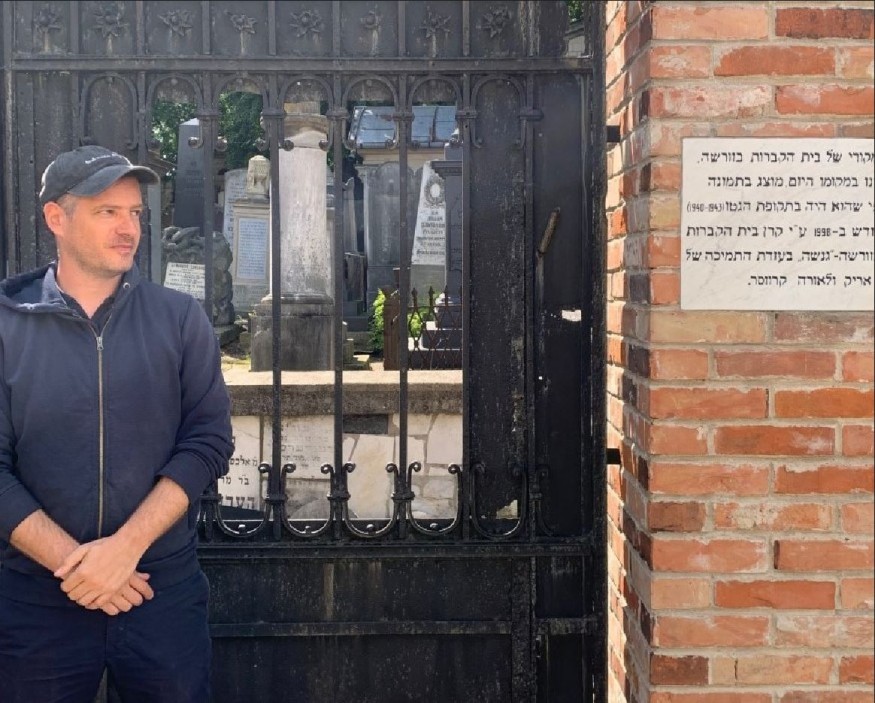
The problem, Wrzosinski told K., is less one of historical whitewashing — he asserts that the cemetery maintains full autonomy over how it presents its history, including the memorials of Jews killed by Poles — but, rather, a broader sense of agency. The Polish government chooses where its money goes in a way that fits their political needs. Its not Jewish communities or Jewish stakeholders who decide which cemetery will be repaired. The result is that a few are refurbished while the rest wither in obscurity.
Contemporary Jewish life in Poland is a riddle defined by a series of oppositions: life and death, Jewishness and Polishness, majority and minority, autonomy and appropriation, and of course, between Jews themselves, most saliently, between Jews who see the Polish government as an ally and those who see it as a threat. If there is a single thread that runs through these tensions — serving as a barometer for the health and status of Jewish life in Poland — it is the cemetery, a space that contains its own mysteries with a dialectic of inside and outside, life and death, sacred and impure.
*
In the hills of upper Małopolska, 30 minutes east of Kraków, lies the town of Słomniki with a population of under 5,000. A thriving community for much of the 19th century, Slomniki’s Jewish population was obliterated by Germans along with collaborationist Ukrainians and Lithuanians. Within three years of war, nearly every Jew of Słomniki – almost 2,500 – had been either deported or murdered, many of whom were shot in the nearby Chodów Forest.
Słomniki’s Jewish cemetery — established in 1898 — is located across from a wastewater treatment plant. In the winter and spring, the cemetery is flooded and inaccessible. I went on a summer afternoon with wheatgrass up to my neck. Inside rusted wrought-iron gates sit four black marble monuments gleaming under the sun which list 230 names of Jewish families who lived in the town. “In memory of the Jews murdered by the Nazis in August 1942. May their souls live among the living.”
Just twenty kilometres from the center of Jewish life in Poland, Słomniki is a forgotten place, and it will likely remain so. I walked across the highway to buy a bag of plums and sat eating them in my car with the window down in the uncomfortable summer heat. As I left the town, I drove past a bus stop defaced with graffiti: “JEBAĆ ŻYDÓW” (“FUCK JEWS”).

Before the Second World War, Płaszów, a suburb of Kraków, was the site of a magnificent burial preparation center for the city’s Jewish community. Built sometime in the first quarter of the 20th century in Byzantine style, the monumental building was the pride of the local Jewish community. Inside were mortuaries, rooms for cleaning and preparing bodies, prayer rooms, and rooms for funeral ceremonies. During the war, it became a forced labor camp where Jews from the Kraków ghetto were sent to work. Those who couldn’t were either sent to Auschwitz or executed on the spot and buried in an unmarked mass grave. The former burial hall was used to house horses, rabbits and pigs, before it was razed to the ground in 1944.
Today, all that’s left of the area’s old Jewish burial chamber is a pile of rocks that are visible from the balconies of the new apartment complexes surrounding the area. The old barracks, which once housed hundreds of thousands of Jews slated for death, is now an expansive poppy field, an ideal place for dogs to roam off-leash.
“It’s very easy to make this a conflict between noble people and bastards whose dogs piss on graves,” Gebert had told me. “But this is really representative of the active disappearance of Jewish memory from the Polish landscape. It’s not that the people there have anything against Jewish cemeteries. In this case, the cemetery is collateral damage: it’s not about the cemetery, it’s about our park.”
Nearby, a cemetery is dedicated to those Jews killed during the war. It is dense with vegetation, and no names on the graves are visible under moss and decay. As I approached, two American musicians sat beneath a tree, making sound recordings. They looked at me suspiciously — an interloper in a place no longer considered sacred.
Taken together, Słomniki and Płaszów highlight an obvious and brutal fact: the Holocaust was to deprive Jewish cemeteries of their natural guardians for decades, perhaps centuries. The sun will shine, the grass will grow, the plaques will remain, no one will come.
Poland, a country where more than half of the world’s Jews have roots, once had over 1,500 Jewish cemeteries — the most in the world. Estimates put Poland’s current Jewish population at 10,000, but many say the actual number is far smaller. The calculus is brutal: roughly one Jewish cemetery for every 15 living Polish Jews.
Gabriel Rom
Gabriel Rom is a reporter, editor, and translator. His writing has appeared in The New York Times, The European Review of Books, and The Los Angeles Times. He is currently pursuing a PhD in European History at Yale University where his research focuses on nineteenth century political thought.
Notes
| 1 | But many argue that the actual number is much lower |
